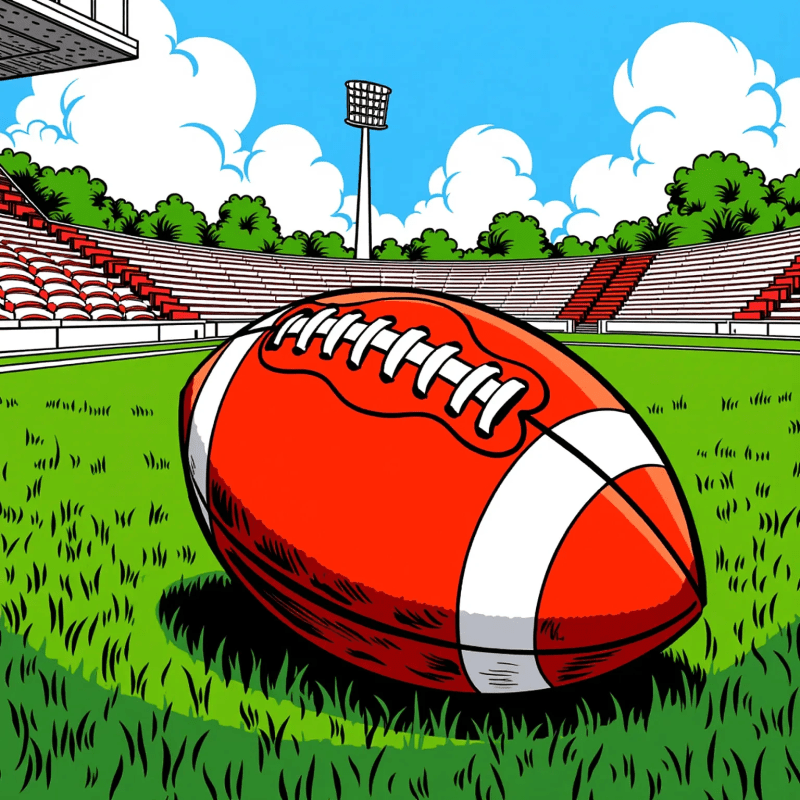Flag football has come a long way since its early days. It all started in the 1940s as a way to keep kids active without the full-contact risks of traditional football. The initial versions were quite informal, with neighborhood games sprouting up wherever there was space to play. As more kids joined in, the need for some basic rules became clear, setting the foundation for what flag football is today.
By the 1960s, flag football began to gain more popularity, especially on college campuses. During this time, schools started organizing official leagues, allowing teams to compete in a more structured environment. The National Football League (NFL) even recognized the growing fan base, helping to elevate flag football's status as a legitimate sport.
The 1980s and 1990s marked a significant turning point with the establishment of national leagues and tournaments. Many communities started to embrace flag football, with youth leagues popping up across the country. This surge in interest meant more kids could participate, making it a fun and safe option for aspiring athletes who were drawn to the excitement of the game.
Today, flag football is not just a kids' game. It's played at various levels, including high schools, colleges, and even adult leagues. The sport has continued to evolve, with new rules and variations emerging, making it accessible to everyone. Whether you're playing for fun or competing seriously, flag football offers a great way to enjoy teamwork and athleticism without the heavy contact of tackle football.
Key Rules That Changed the Game
Flag football has come a long way, and several key rules have played a significant role in its evolution. These changes not only made the game more engaging but also helped to enhance safety and inclusivity for players of all ages and skill levels.
One major shift was the introduction of the two-hand touch rule in many leagues. This adjustment allowed for a smoother flow of the game, reduced the potential for injuries, and made it more accessible for younger players. With fewer tackles, more players felt encouraged to join in—making flag football a great option for schools and community events.
Another game-changing rule was the adoption of the lateral pass. This rule opened up the field and added an exciting dynamic to the gameplay. Teams could develop creative strategies and surprise plays that kept everyone on their toes. It turned flag football into not just a game of speed, but also a game of smart teamwork.
Finally, the introduction of a clear scoring system and the elimination of the "down" system transformed how teams approached offense. By making scoring straightforward and less situational, flag football became more appealing for casual players who might not have the same background in more traditional football formats.
Popular Variations Around the World
Flag football may have started in the United States, but it's quickly spread across the globe, with unique variations popping up everywhere. Each country often adds its own twist, making the game even more exciting!
In Canada, for instance, flag football has gained popularity predominantly in schools and community leagues. Here, players experience a version that combines elements of traditional football with safety-focused rules. It's common to see teams opting for a no-contact approach to keep it fun and safe for everyone involved.
Meanwhile, in Australia, flag football is starting to catch fire. The Aussie version often includes a wider field and emphasizes speed and agility. Games tend to be fast-paced, allowing players to showcase their skills. Local leagues are forming, and you might even find amateur tournaments sprouting up in cities!
Down in Mexico, flag football is embraced by youth leagues, with many schools incorporating it as part of their sports programs. The emphasis here is on teamwork and strategy, with some teams adopting styles that mimic their favorite professional football teams. It’s a great way for kids to learn about sportsmanship while having a blast!
As you can see, flag football isn't just a one-size-fits-all game. Its variations reflect local cultures and preferences, making it a truly global sporting phenomenon. Whether you're playing in a park or a school league, you're bound to find a version that suits your style.
The Future of Flag Football Today
Today, flag football is becoming more than just a casual weekend game among friends. It's evolving into a competitive sport that draws players of all ages and skill levels. What makes flag football stand out is its accessibility; you don’t need a lot of gear and you can play almost anywhere. Whether it's on a school field or a park, more people are picking up the game, and it’s exciting to see how it’s growing.
Thanks to increased exposure from social media and news coverage, flag football is getting noticed. More schools and communities are creating leagues, making it easier for players to join teams and participate in tournaments. There’s a sense of camaraderie and teamwork that makes flag football not just a sport, but a community activity where everyone can enjoy the thrill of the game.
Moreover, the future looks bright with innovations in coaching and training techniques. New programs are focusing on the fundamentals, helping players develop skills that can take their game to the next level. Youth leagues are springing up everywhere, encouraging kids to get involved from an early age. This focus on skill development and sportsmanship is ensuring that the spirit of flag football remains fun and engaging.
As the popularity of flag football grows, we’re also seeing more opportunities for competitive play. From local tournaments to national championships, players can showcase their talent and love for the game. With potential pathways to professional leagues, who knows—one day, we might see flag football as a major sport with fan followings and big events, just like traditional football. The energy and excitement surrounding the game are palpable, making the future of flag football an exciting one.

